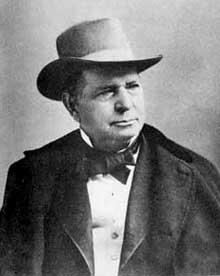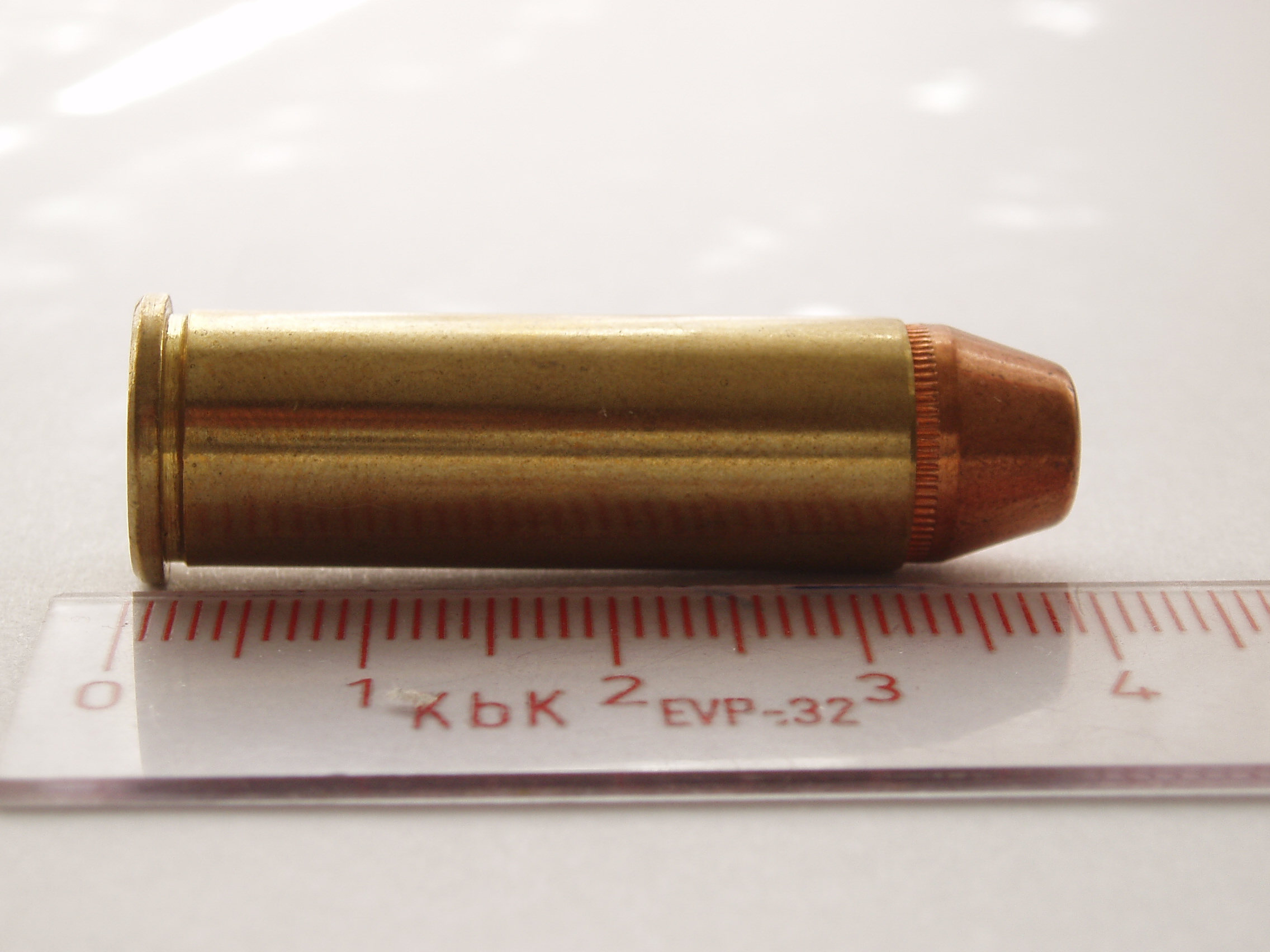|
.40-65 Winchester
The .40-65 Winchester (also called the .40-65 Winchester and Marlin) was an American rifle cartridge. Introduced in 1887 for the Winchester Model 1886, and available in Winchester single shots and in the Marlin Model 1895, it was "a further effort to put more steam" in repeating rifle cartridges.Barnes, and Amber, p.94. In the modern era, the cartridge has gained favor for metallic silhouette shooting and Black Powder Cartridge Rifle matches where it serves as a low-recoil alternative to the common 45–70. It was commercially available in black and smokeless varieties until around 1935, and can be handloaded by reforming .45-70 brass. Nomenclature The nomenclature of the period was based on several properties of the cartridge: * .40: nominal caliber in inches: 0.40 inches (10.2 mm); actual caliber was .406 in ( mm)Barnes, and Amber, p.123. * 65 : weight of propellant (black powder) charge, in grains: 65 grains (4.2 g) See also * List of cartridges by caliber *List ... [...More Info...] [...Related Items...] OR: [Wikipedia] [Google] [Baidu] |
Winchester Repeating Arms Company
The Winchester Repeating Arms Company was a prominent American manufacturer of repeating firearms and ammunition. The firm was established in 1866 by Oliver Winchester and was located in New Haven, Connecticut. The firm went into receivership in 1931 and was bought by the Western Cartridge Company, a forerunner of the Olin Corporation. The Winchester brand name is still owned by the Olin Corporation, which makes ammunition under that name. The Winchester name is also used under license for firearms produced by two subsidiaries of the Herstal Group – FN Herstal of Belgium and the Browning Arms Company of Ogden, Utah. History Early history Predecessors The ancestor of the Winchester Repeating Arms Company was the Horace Smith and Daniel Wesson partnership of Norwich, Connecticut (not to be confused with the famous Smith & Wesson Revolver Company founded later by the same men). Smith and Wesson acquired Lewis Jennings' improved version of inventor Walter Hunt's 1848 " ... [...More Info...] [...Related Items...] OR: [Wikipedia] [Google] [Baidu] |
Smokeless Gunpowder
Finnish smokeless powderSmokeless powder is a type of propellant used in firearms and artillery that produces less smoke and less fouling when fired compared to gunpowder ("black powder"). The combustion products are mainly gaseous, compared to around 55% solid products (mostly potassium carbonate, potassium sulfate, and potassium sulfide) for black powder. In addition, smokeless powder does not leave the thick, heavy fouling of hygroscopic material associated with black powder that causes rusting of the barrel. Despite its name, smokeless powder is not completely free of smoke; while there may be little noticeable smoke from small-arms ammunition, smoke from artillery fire can be substantial. Originally invented in 1884 by Paul Vieille, the most common formulations are based on nitrocellulose, but the term was also used to describe various picrate mixtures with nitrate, chlorate, or dichromate oxidizers during the late 19th century, before the advantages of nitrocellulose became ... [...More Info...] [...Related Items...] OR: [Wikipedia] [Google] [Baidu] |
10 Mm Caliber
This is a list of firearm cartridges which have bullets in the to caliber range. *''Length'' refers to the cartridge case length. *''OAL'' refers to the overall length of the cartridge. All measurements are in mm (in). Pistol cartridges Revolver cartridges Rifle cartridges See also *.410 bore The .410 bore is one of the smallest caliber of shotgun shell commonly available (along with the 9mm Flobert rimfire cartridge, and the less common .22 rimfire shot shell). A .410 bore shotgun loaded with shot shells is well suited for small g ... References {{Firearm cartridge calibers Pistol and rifle cartridges ... [...More Info...] [...Related Items...] OR: [Wikipedia] [Google] [Baidu] |
List Of Rifle Cartridges
List of rifle cartridges, by primer type, calibre and name. File:Cartridge Sample 2.jpg, 350px, From left to right: 1 .17 HM2,2 .17 HMR, 2.5 .17 wsm, 3 .22LR, 4 .22 WMR, 5 .17/23 SMc, 6 5mm/35 SMc, 7 .22 Hornet, 8 .223 Remington, 9 .223 WSSM, 10 .243 Winchester, 11 .243 Winchester Improved (Ackley), 12 .25-06 Remington, 13 .270 Winchester, 14 .308, 15 .30-06, 16 .45-70, 17 .50-90 Sharps rect 54 345 101 556 .17 HM2 rect 110 296 153 556 .17 HMR rect 159 341 207 556 .22LR rect 211 294 265 556 .22 WMR rect 271 221 341 556 .17/23 SMc rect 345 186 432 556 5 mm/35 SMc rect 441 225 513 556 .22 Hornet rect 521 151 602 556 .223 Remington rect 610 134 724 556 .223 WSSM rect 732 95 832 556 .243 Winchester rect 838 85 929 556 .243 Winchester Improved (Ackley) rect 937 23 1030 556 .25-06 Remington rect 1039 25 1123 556 .270 Winchester rect 1132 93 1218 556 .308 rect 1227 17 1316 556 .30-06 rect 1326 106 1440 556 .45-70 rect 1456 31 1585 556 .50-90 Sharps desc none Rimfire ... [...More Info...] [...Related Items...] OR: [Wikipedia] [Google] [Baidu] |
List Of Cartridges By Caliber ...
Calibers in the size range of (mm, inches): * 2 mm (.079+ caliber) * 3 mm (.118+ caliber) * 4 mm (.157+ caliber) * 5 mm (.197+ caliber) * 6 mm (.236+ caliber) * 7 mm (.276+ caliber) * 8 mm (.315+ caliber) *9 mm (.354+ caliber) * 10 mm (.394+ caliber) * 11 mm (.433+ caliber) * 12 mm (.472+ caliber) * 13 mm (.511+ caliber) See also *Table of handgun and rifle cartridges By name * List of Winchester Center Fire cartridges * Winchester Short Magnum * Winchester Super Short Magnum * Remington Ultra Magnum * ICL cartridges {{Firearm cartridge calibers Cartridges by caliber * caliber In guns, particularly firearms, caliber (or calibre; sometimes abbreviated as "cal") is the specified nominal internal diameter of the gun barrel Gauge (firearms) , bore – regardless of how or where the bore is measured and whether the f ... [...More Info...] [...Related Items...] OR: [Wikipedia] [Google] [Baidu] |
Grain (measure)
A grain is a unit of measurement of mass, and in the troy weight, avoirdupois, and apothecaries' systems, equal to exactly milligrams. It is nominally based upon the mass of a single ideal seed of a cereal. From the Bronze Age into the Renaissance, the average masses of wheat and barley grains were part of the legal definitions of units of mass. Expressions such as "thirty-two grains of wheat, taken from the middle of the ear" appear to have been ritualistic formulas, essentially the premodern equivalent of legal boilerplate. Another source states that it was defined such that 252.458 units would balance of distilled water at an ambient air-water pressure and temperature of and respectively. Another book states that Captain Henry Kater, of the British Standards Commission, arrived at this value experimentally. The grain was the legal foundation of traditional English weight systems, and is the only unit that is equal throughout the troy, avoirdupois, and apothecaries' sys ... [...More Info...] [...Related Items...] OR: [Wikipedia] [Google] [Baidu] |
Black Powder
Gunpowder, also commonly known as black powder to distinguish it from modern smokeless powder, is the earliest known chemical explosive. It consists of a mixture of sulfur, carbon (in the form of charcoal) and potassium nitrate (saltpeter). The sulfur and carbon act as fuels while the saltpeter is an oxidizer. Gunpowder has been widely used as a propellant in firearms, artillery, rocketry, and pyrotechnics, including use as a blasting agent for explosives in quarrying, mining, building pipelines and road building. Gunpowder is classified as a low explosive because of its relatively slow decomposition rate and consequently low brisance. Low explosives deflagrate (i.e., burn at subsonic speeds), whereas high explosives detonate, producing a supersonic shockwave. Ignition of gunpowder packed behind a projectile generates enough pressure to force the shot from the muzzle at high speed, but usually not enough force to rupture the gun barrel. It thus makes a good propellant but is ... [...More Info...] [...Related Items...] OR: [Wikipedia] [Google] [Baidu] |
45-70
The .45-70 rifle cartridge, also known as the .45-70 Government, was developed at the U.S. Army's Springfield Armory for use in the Springfield Model 1873, which is known to collectors as the "Trapdoor Springfield." The new cartridge was a replacement for the stop-gap .50-70 Government cartridge, which had been adopted in 1866, one year after the end of the American Civil War. Nomenclature The new cartridge was completely identified as the ''.45-70-405'', but was also referred to as the ".45 Government" cartridge in commercial catalogs. The nomenclature of the time was based on three properties of the cartridge: * .45: nominal diameter of bullet, measured in decimal inches, i.e., 0.458 inches (11.63 mm); * 70: weight of black powder, measured in grains, i.e., 70 grains (4.56 g); * 405: weight of lead bullet, measured in grains, i.e., 405 grains (26.38 g). The minimum acceptable accuracy of the .45-70 from the 1873 Springfield was approximately at , however, the heavy, slo ... [...More Info...] [...Related Items...] OR: [Wikipedia] [Google] [Baidu] |
Handloading
Handloading, or reloading, is the practice of making firearm cartridges by assembling the individual components (case, primer, propellant, and projectile), rather than purchasing mass-assembled, factory-loaded ammunition. The term ''handloading'' is the more general term, and refers generically to the manual assembly of ammunition. ''Reloading'' refers more specifically to handloading using previously fired cases and shells. The terms are often used interchangeably however, as the techniques are largely the same, whether the handloader is using new or recycled components. The differences lie in the initial preparation of cases and shells; new components are generally ready to load, while previously fired components often need additional procedures, such as cleaning, removal of expended primers, or the reshaping and resizing of brass cases. Reasons for handloading Economy, increased performance and accuracy, commercial ammunition shortages, and hobby interests are all ... [...More Info...] [...Related Items...] OR: [Wikipedia] [Google] [Baidu] |
Gunpowder
Gunpowder, also commonly known as black powder to distinguish it from modern smokeless powder, is the earliest known chemical explosive. It consists of a mixture of sulfur, carbon (in the form of charcoal) and potassium nitrate (saltpeter). The sulfur and carbon act as fuels while the saltpeter is an oxidizer. Gunpowder has been widely used as a propellant in firearms, artillery, rocketry, and pyrotechnics, including use as a blasting agent for explosives in quarrying, mining, building pipelines and road building. Gunpowder is classified as a low explosive because of its relatively slow decomposition rate and consequently low brisance. Low explosives deflagrate (i.e., burn at subsonic speeds), whereas high explosives detonate, producing a supersonic shockwave. Ignition of gunpowder packed behind a projectile generates enough pressure to force the shot from the muzzle at high speed, but usually not enough force to rupture the gun barrel. It thus makes a good propellan ... [...More Info...] [...Related Items...] OR: [Wikipedia] [Google] [Baidu] |
Rifle
A rifle is a long-barreled firearm designed for accurate shooting, with a barrel that has a helical pattern of grooves ( rifling) cut into the bore wall. In keeping with their focus on accuracy, rifles are typically designed to be held with both hands and braced firmly against the shooter's shoulder via a buttstock for stability during shooting. Rifles are used extensively in warfare, law enforcement, hunting, shooting sports, and crime. The term was originally ''rifled gun'', with the verb ''rifle'' referring to the early modern machining process of creating groovings with cutting tools. By the 20th century, the weapon had become so common that the modern noun ''rifle'' is now often used for any long-shaped handheld ranged weapon designed for well-aimed discharge activated by a trigger (e.g., personnel halting and stimulation response rifle, which is actually a laser dazzler). Like all typical firearms, a rifle's projectile (bullet) is propelled by the contained def ... [...More Info...] [...Related Items...] OR: [Wikipedia] [Google] [Baidu] |





